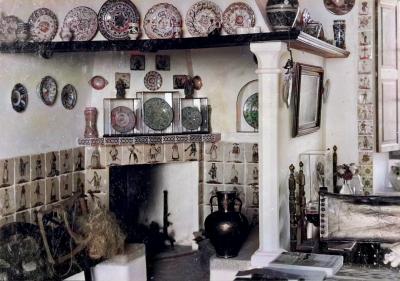How have Mallorcan decorative elements on facades influenced modern architectural designs on the island?
Similar Topics
mallorcan decorative elements
modern architectural designs
traditional motifs
intricate stone carvings
wrought iron balconies
ceramic tiles
natural materials
mediterranean architecture
Mallorcan decorative elements on facades have played a significant role in shaping the modern architectural landscape of the island, blending tradition with contemporary aesthetics. These elements, which often include intricate stone carvings, wrought iron balconies, and colorful ceramic tiles, reflect the island’s rich cultural heritage and vibrant history. Modern architects have drawn inspiration from these traditional motifs, incorporating them into new constructions to create a sense of continuity and respect for local identity. This fusion not only honors the past but also elevates the visual appeal of modern buildings, making them distinctively Mallorcan in character.
The use of natural materials such as local stone and wood, combined with traditional decorative details, has influenced the way contemporary facades are designed. Rather than opting for purely minimalist or international styles, many recent projects integrate these elements to soften the lines of modern architecture, lending warmth and texture to otherwise sleek surfaces. Courtyards with tiled fountains, shuttered windows, and ornamental ironwork have become common features, serving both functional and aesthetic purposes. These design choices enhance the building’s connection to the island’s Mediterranean climate and landscape, creating a harmonious relationship between structure and environment.
Moreover, Mallorcan decorative elements contribute to a unique architectural vocabulary that distinguishes the island from other tourist destinations in the Mediterranean. By preserving and adapting traditional designs, architects ensure that new developments do not erase the cultural footprint of previous generations. This approach has garnered appreciation from local communities and visitors alike, who value authenticity and historical continuity in their surroundings. The result is a diverse architectural fabric where historical influences coexist with modern innovation, each enriching the other to create spaces that are both beautiful and meaningful.
The use of natural materials such as local stone and wood, combined with traditional decorative details, has influenced the way contemporary facades are designed. Rather than opting for purely minimalist or international styles, many recent projects integrate these elements to soften the lines of modern architecture, lending warmth and texture to otherwise sleek surfaces. Courtyards with tiled fountains, shuttered windows, and ornamental ironwork have become common features, serving both functional and aesthetic purposes. These design choices enhance the building’s connection to the island’s Mediterranean climate and landscape, creating a harmonious relationship between structure and environment.
Moreover, Mallorcan decorative elements contribute to a unique architectural vocabulary that distinguishes the island from other tourist destinations in the Mediterranean. By preserving and adapting traditional designs, architects ensure that new developments do not erase the cultural footprint of previous generations. This approach has garnered appreciation from local communities and visitors alike, who value authenticity and historical continuity in their surroundings. The result is a diverse architectural fabric where historical influences coexist with modern innovation, each enriching the other to create spaces that are both beautiful and meaningful.
🧩 Related Questions
Related Question
Are there any natural repellents that can keep bees from entering a parked car?
Related Question
What outdoor activities related to vineyards in Mallorca are most affected by extreme weather patterns?
Related Question
How do the landscapes around the hermitages contribute to their spiritual environment?
